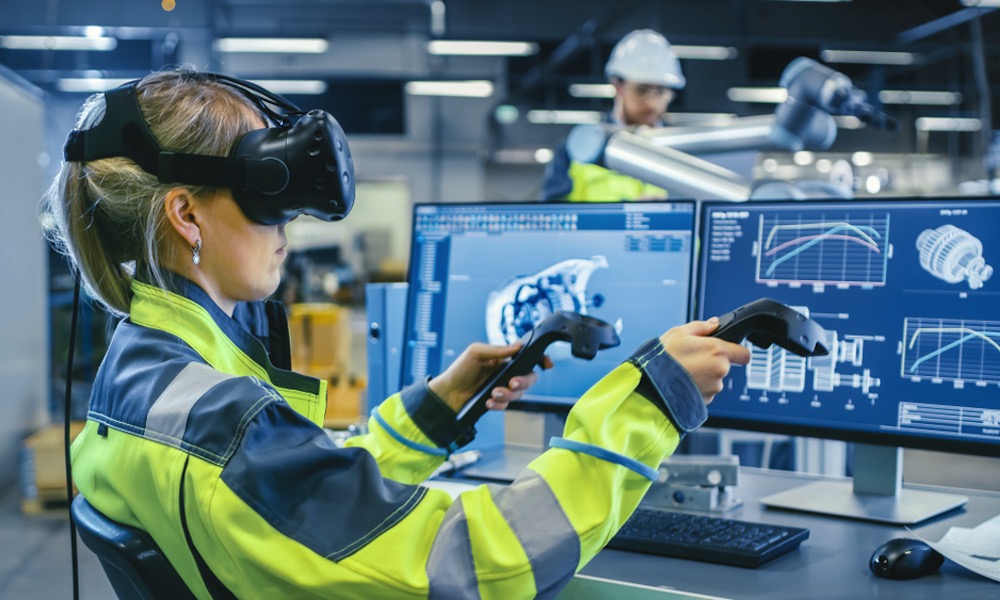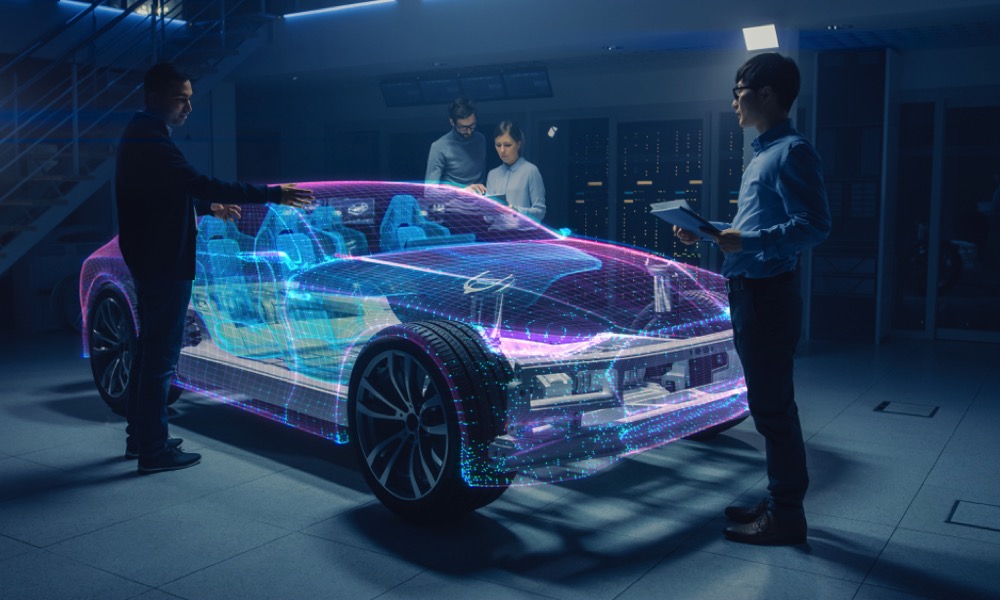What Can You Do with a Mixed Reality Headset? 6 Uses That Just Make Sense
 Credit: Gorodenkoff / Shutterstock
Credit: Gorodenkoff / Shutterstock
Toggle Dark Mode
We’ve been discussing Apple AR/VR technology for years, but this is the year we should finally see some products in action – notably, a new “mixed reality” (XR) headset. That means it will be a headset that can handle virtual reality, augmented reality, and even shift between them.
You may be wondering just what a mixed reality headset is good for. Today’s VR headsets seem to be primarily devoted to gaming, or in some cases watching events in a virtual space. But that’s just the beginning.
Let’s check out practical uses for mixed reality headsets that show why Apple’s timing for its own headset is pretty damn good.
Training
A decade or so ago, AR training got a lot of buzz for being the new frontier of employee training on the job (Google Glass ads also included references to this). That didn’t pan out at the time, except for specific applications in the military – which Microsoft famously stepped in to provide with HoloLens.
Now VR and AR training are becoming more common, with new, advanced applications being used for trickier situations. That includes training firefighters in dangerous situations, medical training for anatomy and procedures, training for specialized manufacturing jobs, and more.
Engineering companies and factories are even experimenting with AR overlays to help more quickly explain complex procedures or guide new employees, with a notable boost in efficiency.
Health and Wellness
It’s fine to be cautious about the consumer benefits of AR technology. Does anyone remember the infamous Google Glass, and how quickly it failed despite being as consumer-friendly as possible? But wellness is one area where studies and testimonies have shown that mixed reality technology could have real benefits. Here are just a few wellness possibilities that can be adopted in clinics, at home, or at various studios.
- Meditation programs to help find a relaxing vista and cut out stressful, real-world noises.
- Interactive biometric feedback in a focused space that allows you to understand your body’s reactions in real-time.
- Digital spaces that create basic puzzles, design or exploration to help deal with anxiety and find healthy coping mechanisms.
- Tackling phobias with the help of an experienced professional.
Navigation
Navigation is an interesting AR field that focuses on overlays across physical environments to help newcomers – helpful signs, arrows, floating text to describe rooms or access points, and much more. These applications are already being used in campuses, venues, museums, and various buildings around the world. It has the potential to be one of the most popular uses of AR technology for the average person.
The downside, of course, is that you can’t ask a newcomer to put on a full headset to find their way around. This tech is typically bound to smartphones or lightweight devices – which, hopefully, Apple’s XR device will be. But with XR, there are new ways to explore real-world locations in a virtual space. That brings us to another important consumer field.
Touring
One of the things the pandemic taught us was that we don’t need to be present to take informative tours of spaces. It’s no surprise that VR and AR technology use quickly rose in the real world. People who wanted to move from a distance or choose a home while practicing social distancing needed a way to tour potential houses or apartments. Tech-savvy realtors began offering virtual tours of popular places they wanted to sell. They were joined by developers marketing their latest apartment project or selling subdivision lots where home construction was planned but not started yet.
Today, it’s common to find 3D tours you can download and use on a headset to explore a space you’re thinking about purchasing. These tours are getting more interactive and advanced all the time, and it seems like this trend is here to stay, especially if XR headsets become a more common part of daily life.
3D Modeling
In the modeling field, there are a few schools of thought. Some believe that engineers and designers are perfectly comfortable using CAD software and similar solutions, and there’s not really a place for XR. Others think that XR can offer valuable solutions for certain types of modeling, especially when it comes to seeing 3D objects in a 3D space.
We tend to side with the latter view. Students first learning important engineering concepts can use XR to explore them in a digital setting instead of relying on videos and images. Designers can more easily check models from all sides to see how they will function in the real world (and where errors may be), before prototypes are even developed. Don’t expect XR to completely take over the modeling industry, but look for it to find an important role.
Office Workstations
Microsoft CEO Satya Nadella himself has supported the idea of using XR at workstations, and it makes sense for certain types of jobs.
Complex programs and multitasking often require workstations with cumbersome ultrawide monitors or multi-monitor setups that can be difficult to manage – especially if space is limited. But an XR headset can simulate as many screens (of whatever size and in whatever place desired) as needed, tapping directly into the same apps or webpages, without the need for real-world hardware.
Since these sorts of jobs also tend to require sitting or standing in the same place for a while, there aren’t any mobility concerns that sometimes plague headset use.










